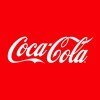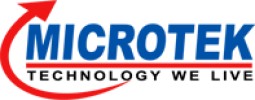
i
Full Creative
Filter interviews by
Full Creative Junior Software Engineer Interview Questions and Answers
Full Creative Junior Software Engineer Interview Experiences
2 interviews found
I applied via Approached by Company and was interviewed before Aug 2022. There were 5 interview rounds.

(1 Question)
- Q1. Introduce Yourself, About Project's
(1 Question)
- Q1. Solid principles, Kotlin , Clean Architecture, Di, Multimodule
(1 Question)
- Q1. DSA questions based on Arrays
(1 Question)
- Q1. Salary discussion, fit check
Interview Preparation Tips
I applied via Company Website and was interviewed in May 2021. There were 3 interview rounds.
Interview Questionnaire
1 Question
- Q1. Questions were mostly about Java
Interview Preparation Tips
Top trending discussions






Interview questions from similar companies

Senior Software Engineer Interview Questions & Answers
JoulestoWatts Business Solutionsposted on 12 Apr 2024
I appeared for an interview before Apr 2023.
(1 Question)
- Q1. There was simple DSA question ,
Interview Preparation Tips

Senior Software Engineer Interview Questions & Answers
Saama Technologiesposted on 10 May 2020
I applied via Recruitment Consultant and was interviewed in Apr 2020. There were 4 interview rounds.
Interview Questionnaire
2 Questions
- Q1. Object Oriented Concepts and basic list/tuple/dictionary/ datetime conversion
- Q2. Project done in last company and how will you help Saama?
Interview Preparation Tips

I applied via Walk-in and was interviewed before Mar 2021. There were 3 interview rounds.
Aptitude test
Current affairs
(1 Question)
- Q1. Puzzle , sql related questions
Interview Preparation Tips

I applied via Naukri.com and was interviewed in May 2019. There was 1 interview round.
Interview Questionnaire
1 Question
- Q1. They were ask Questions from Reasoning and from database developer profile.
Interview Preparation Tips

Senior Software Engineer Interview Questions & Answers
Becton Dickinsonposted on 15 Dec 2019
I applied via Naukri.com and was interviewed in Jul 2019. There were 5 interview rounds.
Interview Questionnaire
1 Question
- Q1. Here they have work basically based on windows. So better to have c# and windows related stuff. Like win32, mfc, .net, c# . Here in my case I did not have experience in windows to ki made them clear about ...
Interview Preparation Tips

I applied via Recruitment Consulltant and was interviewed in Aug 2023. There were 2 interview rounds.
(1 Question)
- Q1. Process knowledge on Electroplating Process from start to end
(1 Question)
- Q1. Salary discussion
Interview Preparation Tips

Senior Software Engineer Interview Questions & Answers
Becton Dickinsonposted on 27 Jan 2023
I applied via Job Portal and was interviewed in Dec 2022. There were 2 interview rounds.

(6 Questions)
- Q1. How do you find the code performance issue in the code deployed in production?
- Ans.
To find code performance issues in production, use monitoring tools and profiling techniques.
Use monitoring tools like New Relic, AppDynamics, or Datadog to track performance metrics and identify bottlenecks.
Use profiling techniques like CPU profiling, memory profiling, and network profiling to pinpoint specific areas of the code that are causing performance issues.
Analyze logs and error messages to identify patterns a...
- Q2. What is asynchronous programming
- Ans.
Asynchronous programming is a programming paradigm that allows multiple tasks to run concurrently without blocking each other.
Asynchronous programming is used to improve the performance of applications that require a lot of I/O operations.
It involves the use of callbacks, promises, and async/await keywords in JavaScript.
Asynchronous programming can be used in both front-end and back-end development.
Examples of asynchro...
- Q3. Write a program to change background after every 0.5 sec interval to orange,white,green on button click in Angular?
- Ans.
Program to change background color on button click in Angular
Create a button in Angular template
Add click event listener to the button
Use setInterval() function to change background color after every 0.5 sec
Use ngStyle directive to change background color dynamically
- Q4. How to load a component only after 3 of my services are loaded?
- Ans.
Use Angular's 'resolve' property to load component after services are loaded.
Create a resolver service that waits for all three services to complete before resolving.
Add the resolver service to the 'resolve' property of the component's route.
Access the resolved data in the component using the ActivatedRoute service.
Example: { path: 'my-component', component: MyComponent, resolve: { data: MyResolverService } }
- Q5. What is difference between iquerable and ienumrable
- Ans.
IQueryable is for querying data from a source that implements IQueryable interface while IEnumerable is for iterating over a collection of data.
IQueryable is used for deferred execution while IEnumerable is used for immediate execution.
IQueryable is used for querying data from a remote data source while IEnumerable is used for querying data from an in-memory collection.
IQueryable is more efficient for large datasets as...
- Q6. When you go with entity framework and ado.net
- Ans.
Entity Framework is an ORM while ADO.NET is a data access technology.
Entity Framework is easier to use and provides more abstraction than ADO.NET.
ADO.NET is faster and more flexible than Entity Framework.
Use Entity Framework for simple CRUD operations and ADO.NET for complex queries and performance-critical applications.
Interview Preparation Tips
Skills evaluated in this interview

Software Engineer Interview Questions & Answers
Saama Technologiesposted on 15 Jul 2022
I applied via Referral and was interviewed before Jul 2021. There were 3 interview rounds.
If you are a fresher , then this is for you else almost no coding test for experienced candidates.
(1 Question)
- Q1. Javascript basics, Angular react general questions depends upon profile.
(1 Question)
- Q1. They asked general questions related to some hectic situation faced in previous company / project..
Interview Preparation Tips
Full Creative Interview FAQs
Tell us how to improve this page.
Full Creative Interviews By Designations
- Full Creative Product Expert Interview Questions
- Full Creative Client Account Manager Interview Questions
- Full Creative Operations Analyst Interview Questions
- Full Creative Quality Analyst Interview Questions
- Full Creative Junior Software Engineer Interview Questions
- Full Creative Web Developer Interview Questions
- Full Creative Chat Support Executive Interview Questions
- Full Creative Intern Interview Questions
- Show more
Full Creative Junior Software Engineer Interview Process
based on 2 interviews
Interview experience
Interview Questions from Similar Companies
Fast track your campus placements
Full Creative Junior Software Engineer Reviews and Ratings
based on 6 reviews
Rating in categories
|
Software Engineer
60
salaries
| ₹5 L/yr - ₹20.5 L/yr |
|
Product Expert
40
salaries
| ₹2.5 L/yr - ₹7 L/yr |
|
Junior Software Engineer
36
salaries
| ₹4 L/yr - ₹12 L/yr |
|
Client Account Manager
32
salaries
| ₹4 L/yr - ₹6.8 L/yr |
|
Software Developer
22
salaries
| ₹4 L/yr - ₹14.2 L/yr |

Reliance Communications

DISH TV

ZF Steering Gear

Coca-Cola Company
- Home >
- Interviews >
- Full Creative Interview Questions >
- Full Creative Junior Software Engineer Interview Questions













